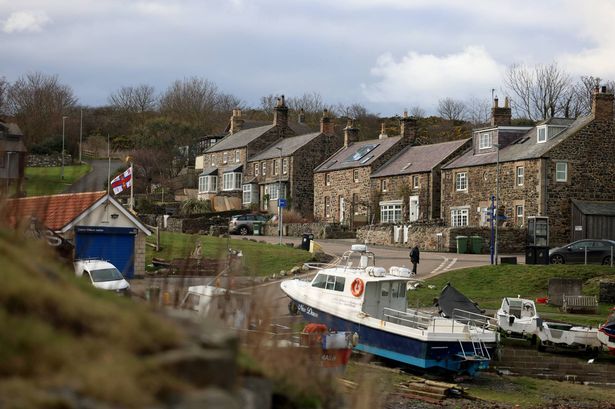Tucked away in Northumberland is an idyllic fishing villages, home to a local delicacy that has been hailed the ‘finest’ in the country – and it’s well worth a visit
Nestled peacefully within the Northumberland Coast Area of Outstanding Natural Beauty, this charming fishing village brims with character and serves up the freshest seafood like nowhere else.
Journey eight miles from Alnwick and you’ll discover Craster, positioned along the northeastern coastline. Countless visitors flock to the area for one particular reason – to sample its renowned Craster kippers – and there’s one beloved establishment that excels above all others.
L. Robson and Sons kipper smokehouse stands as the destination that attracts people from far and wide, all eager to taste its kippers, which are dispatched from this very location throughout the nation. The fish is reportedly so exceptional that it’s rumoured to be delivered directly to the British Royal Family themselves.
The business still processes the locally caught fish using the traditional smokehouses, which have operated for more than 130 years. Craster has subsequently earned a formidable reputation as the birthplace of what many consider Britain’s finest kippers, a claim that, according to the smokehouse website, has been endorsed by numerous celebrated UK chefs.
Additional destinations for food enthusiasts include the highly-rated restaurant, The Jolly Fisherman, which provides breathtaking coastal vistas whilst diners enjoy mouth-watering cuisine. One patron commented on TripAdvisor: “Came here for our second time (after 2 and a half years), and this place is STILL one of our favourite places for seafood!
“We opted for a lighter lunch this time, and I had a prawn and crayfish sandwich, and my husband had the crab sandwich with a side of chips. JUST as amazing as our very first visit was! We’ll continue to come when we’re this side of the country! Highly recommend!”.
After sampling some of the finest seafood available, guests can stroll towards the captivating ruins of Dunstanburgh Castle. Whilst only fragments of the once magnificent fortress survive, the remains offer fascinating glimpses into the heritage of what was formerly a majestic stronghold.
The structure traces its origins back to 1313, when Earl Thomas of Lancaster first erected it, with historians later discovering its initial purpose was to challenge King Edward II’s authority.Today, only its weathered remnants endure, serenely watching over the Northumberland coastline – alongside the Egyncleugh Tower, which towers above Queen Margaret’s Cove.
A recent visitor shared on TripAdvisor that it was a “lovely peaceful walk”. They said: “It’s about a 30-minute, fairly flat walk along the coast path to get to the castle, but it’s worth it. The views along the coast are fabulous, and there are sheep and cows grazing as you walk through them. The castle is peaceful to walk round with great sea views.”
Another visitor shared: “Dunstanburgh Castle is in a beautiful location overlooking the coast and surrounded by beautiful scenery. Most people visiting the castle walk along the coastal path from Craster village to reach the castle. The walk to the castle is mainly flat with a slight incline as you reach the castle entrance. The castle is a well-preserved ruin which is free to enter if you are an English Heritage or National Trust member.”

